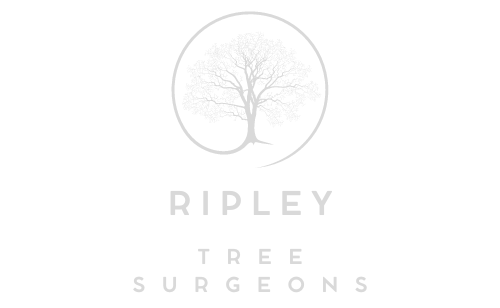Common Pests and Diseases in Trees: Diagnosis and Treatment
Introduction: Trees are beautiful and vital to our environment, but they can also fall victim to various pests and diseases that threaten their health and longevity. At Ripley Tree Surgeons, we understand the importance of early diagnosis and effective treatment to protect our cherished trees. In this blog post, we will explore some common pests and diseases that afflict trees, the signs to look for, and how tree surgeons can diagnose and treat these issues.
1. Common Tree Pests
a. Aphids: These tiny insects feed on tree sap and can weaken trees by depriving them of essential nutrients. Signs of aphid infestation include curling leaves and sticky honeydew residue on leaves and branches.
b. Bark Beetles: Bark beetles can burrow into the bark of trees, creating tunnels that disrupt nutrient and water flow. Look for small holes in the bark and sawdust-like frass.
c. Gypsy Moths: These voracious caterpillars can defoliate trees, leaving them vulnerable to stress and other pests. Look for chewed leaves and egg masses on tree trunks.
d. Scale Insects: Scale insects appear as small, immobile bumps on tree branches and leaves. They feed on sap and can cause yellowing or wilting of foliage.
2. Common Tree Diseases
a. Dutch Elm Disease: This fungal disease affects elm trees and causes wilting and yellowing of leaves. Infected trees should be promptly removed to prevent the spread of the disease.
b. Oak Wilt: Oak wilt is a deadly disease that affects oak trees. Symptoms include wilting and browning of leaves, often starting at the tree’s crown.
c. Anthracnose: Anthracnose is a fungal disease that can affect various tree species. It causes dark leaf lesions, leading to defoliation and reduced tree health.
d. Powdery Mildew: Powdery mildew is a common fungal disease that leaves a white, powdery substance on leaves. It can affect a wide range of trees and shrubs.
Diagnosis and Treatment
Tree surgeons are trained to diagnose tree pests and diseases through visual inspection and, if necessary, laboratory analysis. Once the issue is identified, treatment options can include:
1. Pruning: Removing infected branches or foliage can help prevent the spread of diseases and reduce pest populations.
2. Fungicide Treatments: Fungicides can be applied to trees to combat fungal diseases. Timing and application methods are crucial for their effectiveness.
3. Insecticide Treatments: Insecticides may be used to control pest populations. However, choosing environmentally friendly options that minimise harm to beneficial insects is essential.
4. Preventive Measures: Tree surgeons can recommend preventive measures, such as improving tree health through proper watering, mulching, and soil management.
Conclusion: Early diagnosis and effective treatment are essential to protect trees from the threats of pests and diseases. At Ripley Tree Surgeons, our dedicated team of tree care experts is committed to preserving the health and beauty of your trees. If you suspect your trees may suffer from pests or diseases, don’t hesitate to contact us. With timely intervention and proper care, we can help your trees thrive and continue to enhance your landscape for years to come.
Call us on: 01773 300 799
Click here to find out more about Ripley Tree Surgeons
Click here to complete our contact form and see how we can help with your tree’s needs.

